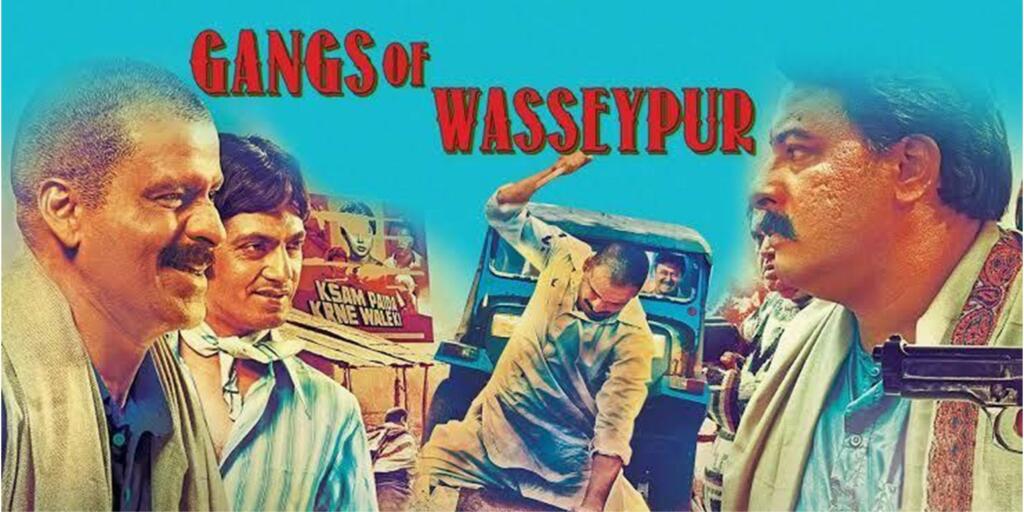Koi abhi tak chua nhi kya? Chu gaya. This is the heartfelt response of every Bihari after watching the movie Gangs of Wasseypur. It was iconic in more ways than one. Emotions, actions, drama, unintentional comedy and what not. Film has everything.
Gangs of Wasseypur : The plot
The Gangs of Wasseypur movie is centred around revenge. Problem for many is that if it’s about revenge, why not kill Ramadhir Singh in one go. That’s where the pride and honour aspect of Sardar’s resolve becomes crucial. He shaves his head for it. It is such a hard choice to make, especially for a boy just entering into adolescence. The thing is that there is no greater honour than sacrificing yourself for a thing superior to your own needs. Add to that a purpose so close to heart as father’s honour. Some may call it the oppressive side of patriarchy, but hey, living without honour is not actually living. People living in concrete jungles of the metro can rarely connect to that aspect of the Gangs of Wasseypur movie.
The aim was to obliterate the idea of Ramadhar Singh and not the man himself. In order to achieve that, Sardar travels to cities and states to weed out minute aspects of his influence. He grabs Ramdhir’s land, and kills his men and muscle to relieve the common populace of anxiety about Ramadhir. Somehow, in between all this, he loses touch with his family. While Sardar finds a mistress in Durga, his children grow up virtually fatherless. It takes two deaths for Faizal Khan to regain his consciousness, which was shaken by another act of treachery. His revival is a miracle in itself. Faizal ultimately succeeds in avenging his father’s and grandfather’s death. Towards the end, the idea of Ramadhir has also died. JP, his son and successor is nowhere close to Ramdhir’s shrewdness, pragmatism and political influence.
Politics of gangwars
Gangs of Wasseypur movie is a trend setter. It shows the reality as it is. There is no attempt to tell the audience that the world they are living in is different from the movie. Audience finally got a bone-chilling experience of what actually transpires in violent-hit regions, especially Bihar. People get killed, there are a few weeks of remorse and then everyone moves on. Yes, people did not remember the person for longer, but even after their deaths, their ideas are driving the movie.
Read more: Gangs of Punjab: A story way more complicated than ‘Gangs of Wasseypur’
This is in exact contrast to other Bollywood movies. Audiences are accustomed to other characters crying over dead and then suddenly the ideas pushed by those characters disappear. It did not happen in Wasseypur. There was less crying and more respect for the dead. Even after they disappeared, Shahid and Sardar Khan became the guiding force of the movie.
After watching the Gangs of Wasseypur movie, one can clearly demarcate the difference between earlier movies on Bihar and Gangs of Wasseypur. While other movies focus more on collusion between mafia and administration, Wasseypur is more focussed towards their collision. Collision involves personal rivalries, family separation, caste and religion conflict, greeds and gangwars. At the same time, two opposing forces (on communal lines) also join hands to thrash one of their own, which is where the opportunistic and real aspect of human nature is involved.
Romantic aspect is not Bollywoodian
Even with that much violence, there is a flavour of romance in the Gangs of Wasseypur movie. There is a dichotomy in romance between two generations as well. Sardar did not grow up watching movies and was devoid of any poetic idea of romance between genders. It is quite well-reflected in the way he talks to Nagma just after his marriage. The man explains to her about his own expectations from her rather than asking about her. Then he spends a few years with Nagma and gets accustomed to the female mind, but not fully.
This is the reason why you see Sardar approaching Durga in a half-gangster and half-romantic way. His stare to Durga is more of a death stare than a romantic one. A helpless and sedative Durga senses both fear as well as security. Security in the sense that if she is able to twist this monster’s morale in her favour, her problems could get sorted. Sardar assures her when he says, “लाओ, तुम्हारा बोझ उठा लें”. In the literal sense, the assurance was about the bucket, while in metaphorical it was about Durga.
Believe it or not, that is how romantic relations used to build up before movies started to change it. Even that aspect is shown in how Daanish and Faizal approach their respective finacees. Both try to assimilate movies’ mannerism on their own, but only remain a pale shadow of on-screen romance heroes. Isn’t it exactly how most of us are in real life? We feel love in the bones and try to articulate it through lexicons given to us by movies and most of us fail miserably. In the process, we bring up our own versions of romance.
In fact, that is true for every other aspect of human endeavour. Gangs of Wasseypur just portrays it on-screen.
Support TFI:
Support us to strengthen the ‘Right’ ideology of cultural nationalism by purchasing the best quality garments from TFI-STORE.COM
